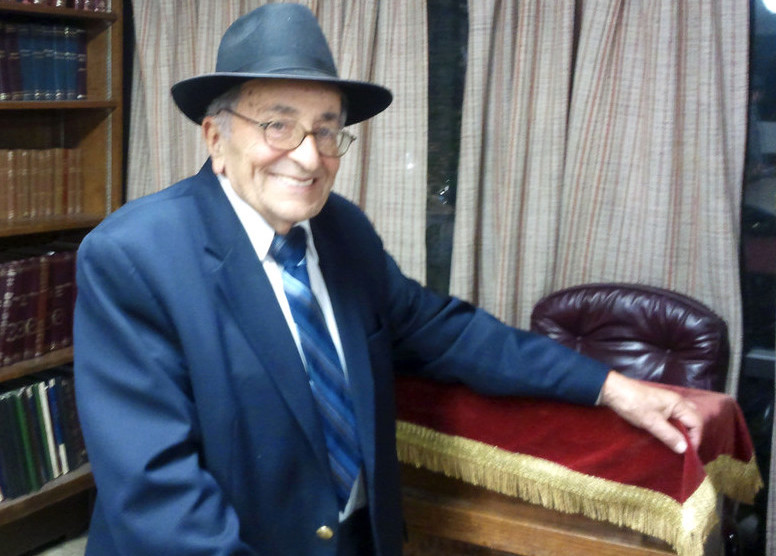Tribute to Rav Pelcovitz on his first Yahrzeit
On the first Yahrzeit of Rabbi Raphael Pelcovitz of the White Shul, I am reprinting Rabbi Dr. Shnayer Leiman’s contribution, which appeared in this space last year. Rabbi Leiman, who knew Rav Pelcovitz for many years, is the author of “Rabbinic Responses to Modernity.”
It is important to stress Rabbi Pelcovitz’s enormous impact, not only on the Far Rockaway and Five Towns Jewish communities and their many Jewish educational institutions.
Jews came first to Arverne at the turn of the 19th into the 20th centuries. During the summer months, they were escaping from the sweltering heat of their tenements in New York City, seeking respite at the beaches of Arverne in the pre-air conditioner age. From Arverne, they made their way to permanent residency in Far Rockaway. It was in Far Rockaway that Rabbi Pelcovitz would leave an indelible imprint on Orthodox Jewish life. Prior to his arrival in Far Rockaway in 1951, Orthodox Jewish life barely existed in the Five Towns.
Rabbi Pelcovitz assumed the rabbinate of the White Shul in 1951. His levayah took place almost 70 years later. Virtually no one was left of the many tireless ba’alei batim who were his closest associates and who helped build the Far Rockaway and the White Shul that one sees today. Yet Rabbi Pelcovitz touched so many lives, that second, third, and fourth generations of White Shul ba’alei batim came to pay tribute to their mentor and teacher.
The main sanctuary of the White Shul, large as it is, even with the opening of additional side rooms, could not contain the massive crowd that came to honor for one last time the Rabbi Pelcovitz they loved and admired. Yehei zikhro barukh!
• • •
In December 2016, on the occasion of Rav Pelcovitz’s celebrating 65 years of service at the White Shul, I published in the Kosher Bookworm two columns focusing on his career, which I’m pleased to excerpt here:
During a communal tribute at the White Shul, Rabbi Leiman devoted a large portion of his Shabbos Toldot presentation to the career of Rabbi Pelcovitz, who was ordained by Yeshiva Torah Vodaath in Brooklyn and served several out-of-town synagogues before coming to the White Shul in 1951. He “was part of a long tradition of dedicated rabbis who not only transmitted Torah teaching from one generation to the next, but who also was particularly sensitive to the needs, spiritual and mundane, of his congregants,” Rabbi Leiman said, adding a personal note:
“I was present in the White Shul 65 years ago, in 1951, when Rabbi Pelcovitz gave his first sermon. He was the first rabbi of the White Shul to speak regularly in the vernacular. The two previous rabbis delivered their sermons in Yiddish.
“Derashos, sermons in English! And, every sermon had a beginning, a middle and an end. Every sermon had a message based upon the teaching of our sages. He was articulate, and sweetened his presentations with stories and parables and even aphorisms from the wisdom of the nations. He taught us Torah — not with fire and brimstone, but with love, sensitivity, and tolerance.
“He learned from the teachings of the gedolim of the past, from the likes of Rabbi Chaim of Volozhin, and transmitted that teaching to thousands of young men and women here at the White Shul, and to audiences throughout the U.S.”
r
om Dr. Zev Eleff’s recent anthology, Modern Orthodox Judaism (Jewish Publication Society), I first learned of Rabbi Pelcovitz’s views of the future of Orthodox Judaism and especially that of the Orthodox shul and its youth.
With the assistance of Rabbi Simon Posner of the Orthodox Union, I obtained the original essay, titled The Yeshiva Alumnus and The Synagogue. It is excerpted here:
“A careful study of various communities where a concentration of yeshiva alumni is found will reveal some strange and startling facts. True, a goodly number of yeshiva-trained laymen, among them some former practicing rabbis, are congregants of synagogues and do take an active part in community affairs.
“A sizable group, however, carefully avoid the synagogue and are conspicuous by their absence in many areas of community endeavor. They establish smaller private minyonim or patronize a local shtibel. They avoid the synagogue, both as congregants and participants, though it should be noted that many are members in name only for reasons best known to themselves and/or the energetic membership chairman of the local synagogue.”
Further on, Rabbi Pelcovitz notes that “the hands of the rabbi would certainly be greatly strengthened in guarding the pristine traditional character of the shul if there were but a nucleus of strongly committed and articulate Orthodox laymen in the congregation.”
Lastly, consider the situations we currently face with at-rise youth — as well as at-risk adults — in our community:
“What is so often overlooked by yeshiva graduates is the effect of their detachment upon their own children. What attitude toward the kehillah, its rabbi, communal responsibility, and unity is fostered when children are withdrawn from the mainstream of the Jewish community in which they live? Certainly this is an integral part of chinuch, on a par with formal academic education.”
Rabbi Pelcovitz asks: “What guarantee is there that those of the next generation will be properly trained to take their places in the Jewish community of their choice, once they leave the homes and shtibelach in which they have been reared?”
And lastly: “Where shall they turn in their shtibel-less suburbia for anchorage, affiliation and identification?”
My dear reader, these are the words of a very wise and scholarly rabbi, reflecting the situation still current in many spiritual venues unto this very day.
And consider that these teachings by Rabbi Pelcovitz were written in October 1960!
A version of this column appeared last year.

 69.0°,
A Few Clouds
69.0°,
A Few Clouds 




